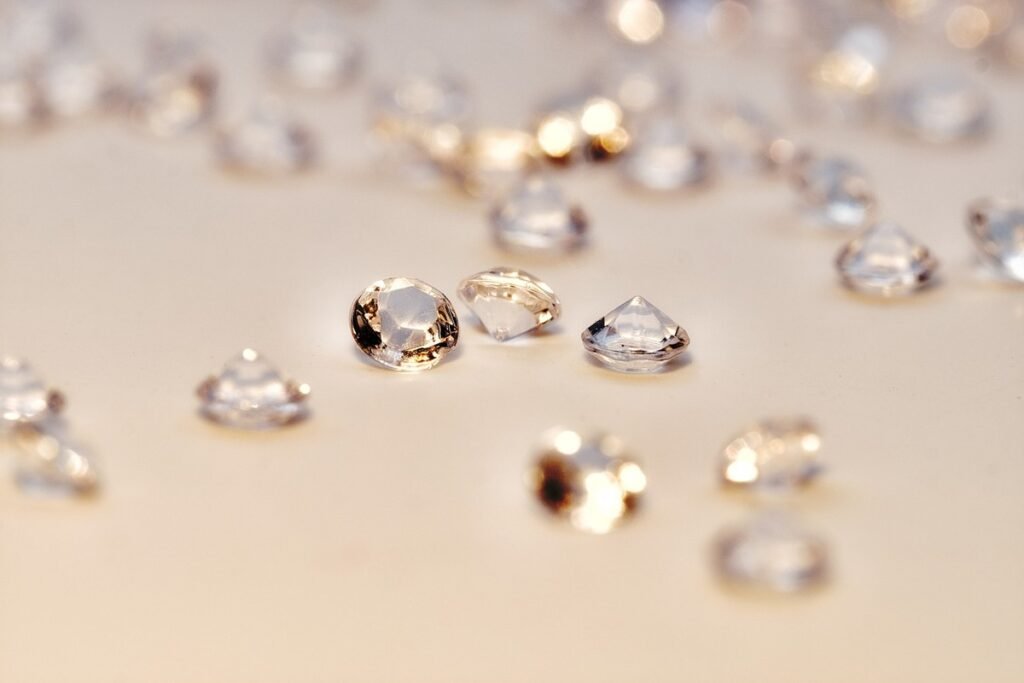When you buy a diamond, you expect to get your money’s worth. As such, you may want to take all the possible precautions to make sure that it’s the best choice out there. Needless to say, it pays to know how to spot fake diamonds. And we’re here to teach you how.
How To Spot A Fake Diamond
Unfortunately, there are fake diamonds that circle around the markets. Even if you are just a buyer, it’s good to know the different ways to tell the authenticity of your diamonds. Professional jewelers have tried and tested techniques to tell if a diamond is fake or real. You can even do some of them right in the comforts of your home. Read on to learn how to spot fake diamonds.
Will Your Diamond Pass These Tests?
If you have just bought a diamond or if you received one as an inheritance or a gift, then you would need to know if the diamond passes the authenticity test. Take your diamond for a test run. Some of these tests are actually fun to do—and can reassure you that what you have is real.
Scratch Test
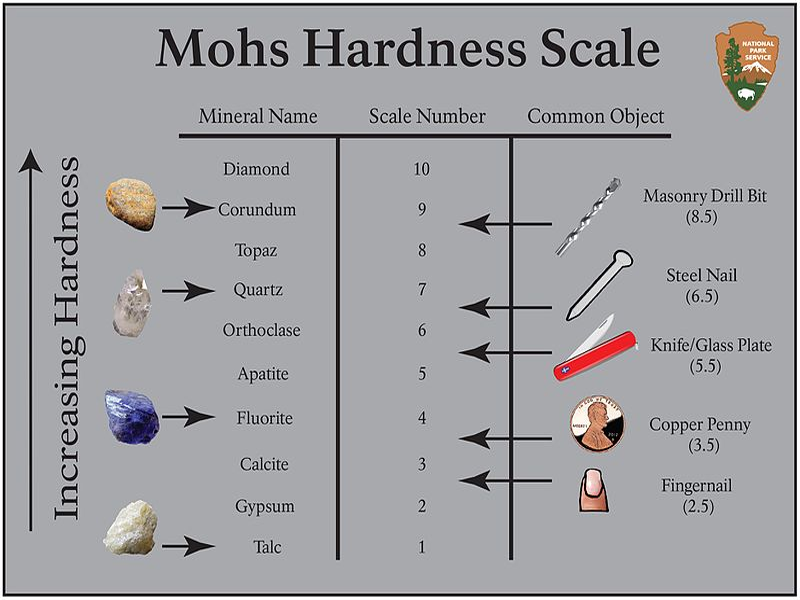
Perhaps the easiest and most well-known test for diamond owners would be the scratch test. Since the diamond is one of the strongest gems around, it can actually cut through less sturdy items.
Prepare a piece of glass or plate and your diamond for testing. Try scratching the glass surface with the diamond’s culet. The upside here is that you can be 75% sure of your diamond if it manages to scratch the glass surface. However, there is also the risk of damaging the diamond.
The scratch test may be useful if you want an easy way to answer the burning question of “how can you tell a diamond is real?” But keep in mind that other stones can also cut through glass, so it may not be the most effective.
Test The Fog
Want a test that you can do while you are shopping for diamonds? The fog test may be an easy yet effective way to tell. Hold the diamond close to your mouth and breathe on it. If the fog clears out within two seconds, the diamond is real.
This is far from magic; it’s because of a diamond’s ability to disperse heat in an instant. However, this will only truly work if the diamond is clear from any oils or dirt, so make sure to wipe the diamond down first before the test.
The Newspaper Test
When you want to know, “Can you tell a real diamond from a fake diamond?” at home, then you can do the newspaper test. This test suits loose diamonds, so this is great for those who have loose stones that they are looking to sell.
First, you need to spread out the newspaper on a table. Place the loose diamond on one of the texts in the newspaper. Look through the diamond and see if the text is still legible. If it is, then it’s a big chance your diamond is one of the best fake diamonds around.
Floating Diamonds
The float test is by far the easiest one on this list, but it is also the most vulnerable to inconsistencies. Note that this test can only be done for loose stones, too.
You can use this as a preliminary test to see if what you own are fake diamonds. Have a glass of water prepared. Drop your loose stone into the water. If it sinks to the bottom of the glass, it’s a real diamond.
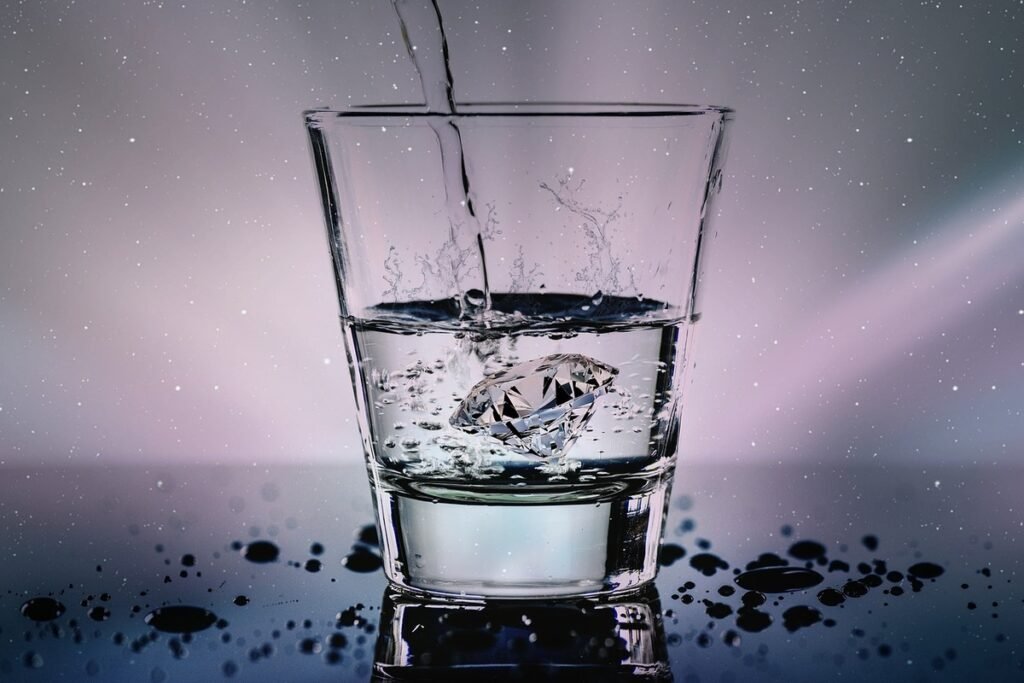
Diamonds are highly dense as stones. However, with the availability of various materials and glass substances, other fake diamonds may not necessarily float.
Black Light Testing
If you have a portable UV light at home, you can use it to check a loose or a set diamond. Hold the UV light over the diamond. If the diamond’s color appears to change and emit a blue glow, you are looking at a real diamond.
Just like the other tests, however, the results may not be as conclusive. Some real diamonds do not have fluorescence so there may not be any blue glow. It’s best to match this test with other home tests on the list, especially if you cannot go to a professional jeweler to have your diamond checked.
Testing By Fire
As the name suggests, this entails a more heavy-duty testing approach. Again, this technique can only be applied to a loose diamond, so avoid trying this on set stones. If you have ever wondered, “Do fake diamonds break?” then this test is the perfect approach to use to hit two birds with one stone.
Put the diamond over a fire, whether using a stove or a lighter. Keep it over the fire for 30 seconds. Afterward, drop the diamond into a bowl of cold water. If the diamond is real, nothing will happen to the stone. A fake diamond will shatter to pieces upon contact with cold water.
Real diamonds can take the heat and the sudden switch in temperature. Considering how diamonds formed with the intense heat and pressure from the Earth, this is not surprising. Sadly, even good imitation stones cannot take the same pressure.
This is why this test may be one of the more effective ones to use when you want to tell if a diamond is real. But the trade-off is that, if it is a fake stone, then chances are you will break it with this technique.
Pro-Tip #1: The Loupe Test
If you are hunting your diamonds in jewelry shops, there are a few ways to make sure that what you are buying is real. To begin with, it pays to shop with a trusted jeweler in the first place. You can be more assured of where they source the stone and the exact grading that it has through its certification.
In case you are shopping in a new store, the loupe test may be more viable. You can ask your jeweler if you can borrow a loupe, which is the magnification device they use to inspect diamonds.
A loupe allows a viewer to see the details of the diamonds, up to the inclusions that may be present inside the stone. This device can be used to inspect and measure the class and clarity of a diamond.
When doing the loupe test, most jewelers may want to explore the possible inclusions in diamonds. Unless it is a flawless or almost flawless stone—and this should definitely come with a certification, considering its perfection—diamonds should have unique inclusions. If it is a faux diamond, chances are there will be very few to no inclusions even in lower grade options.
Another way to maximize the use of the loupe is to examine any color changes. Slight color changes or flecks in the diamond suggest that it is a real diamond. One thing to note, however, is that lab-grown diamonds may also not have natural inclusions. If you suspect this possibility, always consult with the jeweler that you are buying it from.
Pro-Tip #2: The Diamond Scale
One more reason to pay a visit to your neighborhood jeweler is to get access to a diamond scale. Most jewelers will have this device as they need this for getting the weight of a diamond for sale. Consider this as a more official way to check a diamond’s authenticity.
Fake diamonds tend to weigh more than a real diamond of the same size and shape. This is especially the case with cubic zirconia, which is recorded to be heavier by 55% compared to a diamond of the same dimensions. When buying real diamonds, always ask for the certification, regardless of the test’s outcome.
Are All Fake Diamonds Bad?
Finding out that you paid the price for a real diamond and got a fake one is a bad experience. However, if you are looking to purchase fine jewelry but only have a budget that can accommodate a fake diamond, you can still get a good piece at a friendlier price. After all, as can be seen in the trend of synthetic diamonds, there is predicted continuing growth in the segment in the next decade.
A good fake diamond
The term “fake diamond” can actually be a misnomer. There’s a difference between an artificial or lab-grown diamonds and a faux diamond. The latter resembles a diamond closely even in terms of composition, so their price point will roughly be the same as well.
What is a good fake diamond called?
For individuals working on a tight budget, faux diamonds can be a good alternative. But even in the world of fake diamonds, these rocks are not created equally. Some may be harder and clearer than others, making them the class A level of imitation.
If you are looking to buy an imitation diamond, the best options would be the moissanite fake diamonds, white sapphire, or cubic zirconia fake diamonds.
Moissanite: Closest to the real thing
As far as getting the closest look to a real diamond, the moissanite may be your best bet. It reels in a 9.5 on the Mohs scale, which is just a 0.5 grade away from the perfect 10 of a real diamond.
Most moissanite also appear colorless when put side by side with the real thing. To an extent, even moissanite are not even common, to begin with. Many moissanite used in fine jewelry tend to be lab-grown.
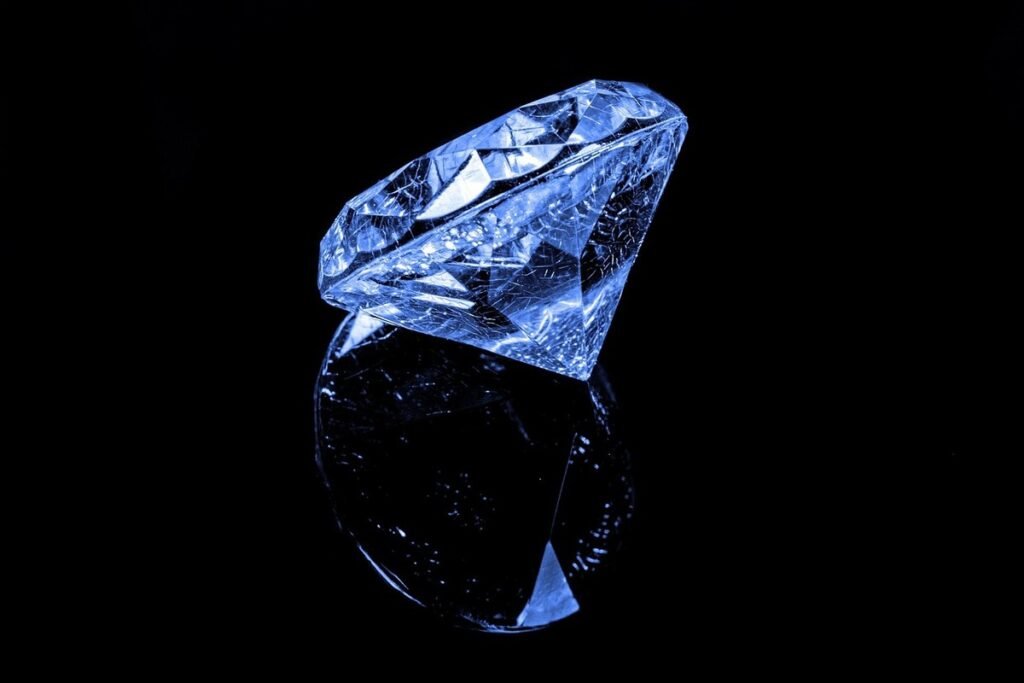
So how do they differ from real diamonds? A trained eye or a diamond enthusiast’s eye can pick up on the more colorful sparkle of moissanite. Because moissanite have a higher refraction index, this creates a rainbow effect when light hits the stone. It also pays to know that the rainbow effect can influence the overall look of the diamond. This is important to remember, especially if you are wondering, do fake diamonds shine when exposed to light.
If you opt to get moissanite, it’s better to get a smaller stone. Bigger moissanite stones tend to suffer even more from the rainbow effect. This may give it a more faux sparkle from up close.
Cubic zirconia: Fair looks for a fair price
Cubic zirconia make up the most number of faux diamonds in the market today. Its biggest selling point would be its price. Compared to the other two popular choices for fake diamonds, cubic zirconia only costs a fraction of a real diamond.
However, one drawback for most customers is its durability. On the Mohs scale, it only reaches up to 8.5 at most in terms of hardness. This makes it a less suitable choice for engagement rings, especially if the wearer has an active lifestyle. Engagement rings with this stone tend to experience a lot of scratches. This takes away from the overall brilliance of the faux diamond over time, and may eventually require replacement.
If you are looking for retail or ready-made faux diamonds, this may be the more available option. Think of it as the popular on-the-shelf choice, but as far as fine jewelry goes, it may not be the best one for the long haul.
White sapphire: Pure white, less fire
Despite these quirks that put it farther down the scale comparison with real diamonds, a white sapphire may have the best advantage if you are looking to have a unique ring. Diamonds may be the favorite gemstone for most engagement rings, but there’s a big chance that your design may not be one-of-a-kind.
When choosing a white sapphire, it sets your stone deliberately apart from a real diamond immediately based on looks alone. But compared to the cubic zirconia, the white sapphire is by far harder as a stone, making it more durable. It also comes in bigger cuts, so you can have a much bigger stone for a more affordable price.
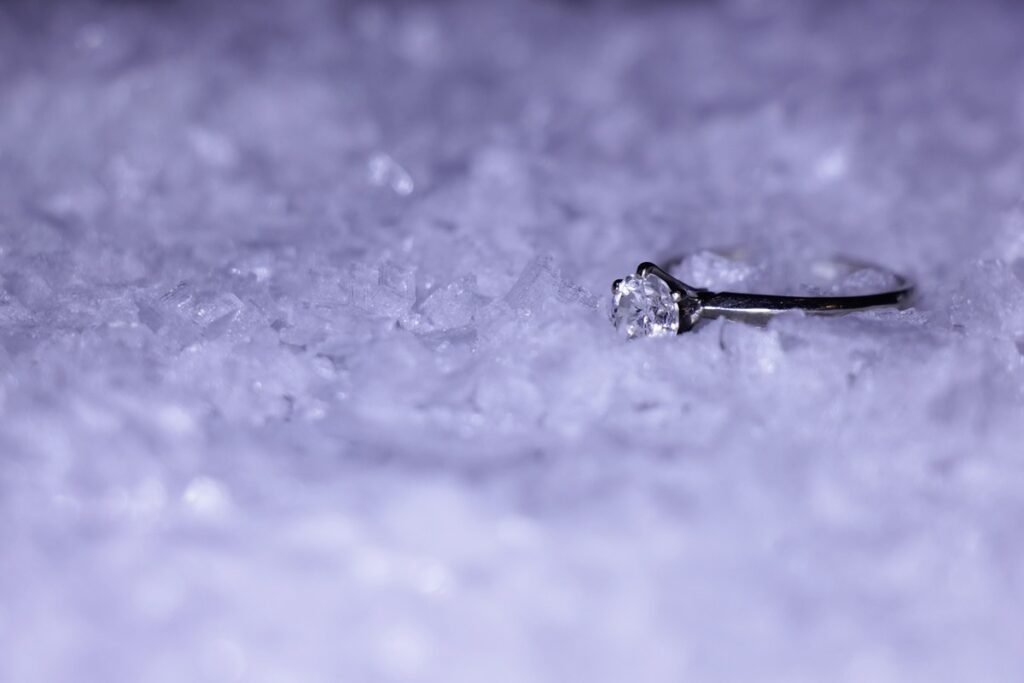
Best of all, its silvery-white appeal will give it a different shine. This creates an entirely different look for your engagement ring. Nowadays, engagement ring trends emphasize originality in design and gemstone combination. Choosing a white sapphire will give your stone a unique silvery white appeal.
Now that you know how to spot fake diamonds, bear in mind that real diamonds remain a good investment given their market value. But if you are looking to have a great center stone for an engagement ring, there are other options that will not break the bank, but still deliver a good sparkle. Faux diamonds have been on the rise. As long as the thought is there and the price is right, then options for a good significant stone for your significant other abound in the market.
If you want to know more about lab-grown diamonds, read “Lab Grown Diamonds: Are They Worth It?”
